Panzer Assault Badge, in Silver, by Unknown Maker: Semi-Hollow Daisy
CATEGORY: Version
SKU: 01.GTR.0603.103.05.000
Estimated market value:
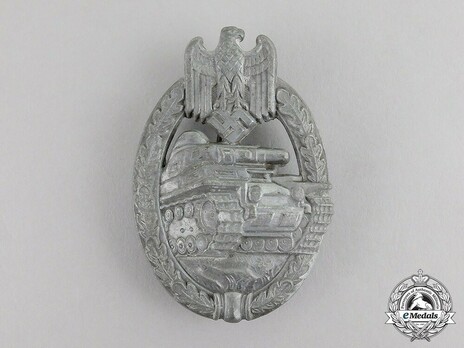
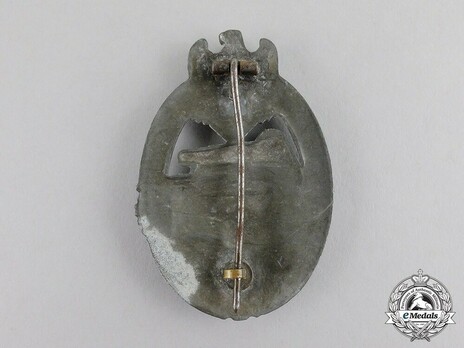
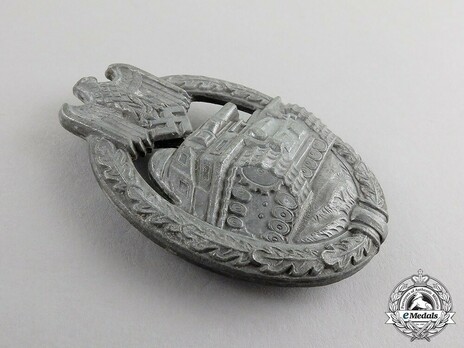
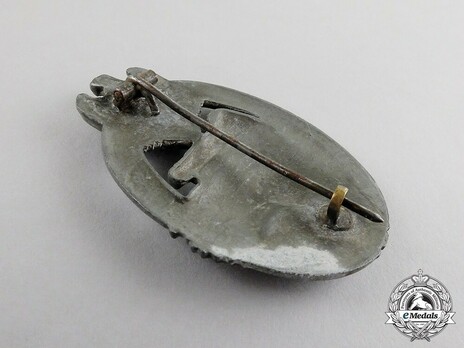
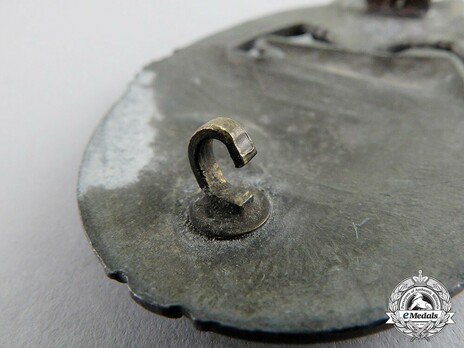
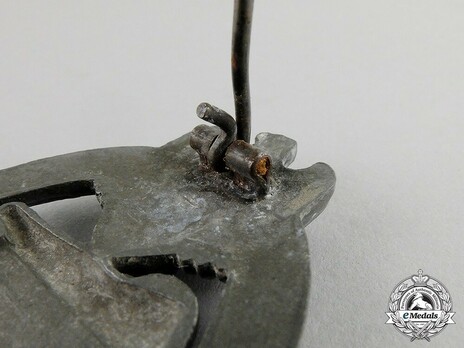
Estimated market value:
A second war period silver grade tank badge “Panzerkampfabzeichen”; oval shaped silvered zink; the obverse with a border of oak leaves with a tie at the base and a Panzerkampfwagen IV superimposed in the centre on grassy ground - of note is the trademark “Daisy” in the grass, with its left tank track extending over the edge of the badge; the reverse plain with a vertical needle style pin, sheet metal hinge, and a round wire catch; measuring 41.64 mm (w) x 61.09 mm (h); weighing 28.2 grams; with nearly all of its original silver finish preserved; in overall near mint condition.
The Panzer Assault Badge in Silver was founded under the order of Colonel General Walther von Brauchitsch on December 20, 1939, and was conferred upon members of the Armoured Panzer Division who participated in three engagements with the enemy on three separate days.
The badge was originally only conferred upon tank crews, and was silver in colour, but on June 1, 1940, the crews of other Armoured Vehicle Divisions and the personnel of the Panzer-Grenadier Divisions became eligible to receive the award in a bronze-coloured version.
On June 22, 1943, the design of the badge was modified, and the numbers 25, 50, 75, or 100 could be added to the base of the award to denote the number of engagements a recipient had participated in. These are called the Higher Grades of the Panzer Assault Badge, while the original one was defined as Grade I. The badges in silver awarded for 25 and 50 tank engagements feature a silvered tank in a silvered wreath; the badges for 75 and 100 tank engagements are larger, and feature a gilt tank in a gilt wreath.
The badges in bronze for 25 and 50 tank engagements are all over bronze, and the badges for 75 and 100 engagements are bronze with gilt wreaths.
The decoration was designed by graphic designer Ernst Peekhaus from Berlin.
The first badges were made from nickel silver. Due to material shortages during the mid and late wartime period, makers eventually changed to zinc. However, other materials like tombac or cupal are also known to have been used. Badges feature either a hollow, a semi-hollow, or even a solid reverse.
Panzer Assault Badges are grouped into several different overall design types. This is due to similarities between some makers creating their dies based on a single shared example.
Design Type II can be easily distinguished by a few design features, most noticeably a specific rock pattern underneath the tank.
It has been speculated that the so-called semi-hollow daisy badges were produced by Schauerte & Höhfeld, but this is solely based on circumstantial evidence and cannot be proven. These badges were made of zinc.

Comments
Sign in to comment and reply.


Scroll Top